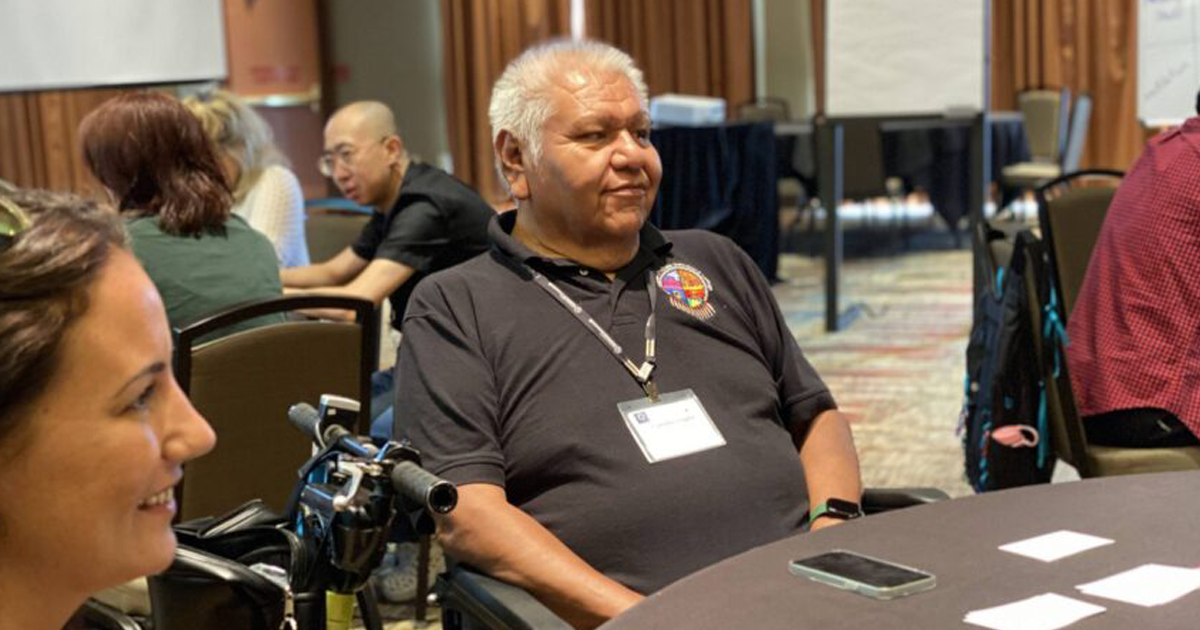Creating Culturally Responsive Math Pathways Together with Tribal Colleges and Universities
Posted on

By Lisa Savcak, Engagement and Communication Director
This story first appeared on the Carnegie Math Pathways Blog and is posted here with permission.
In 2017, Carnegie Math Pathways and several Tribal Colleges & Universities (TCU) formed a professional network with the shared goal of increasing student outcomes and college completion through culturally aligned mathematics learning and teaching that centers Native students and communities.
Today, with over 3,500 TCU students served, we’ve made significant progress toward this goal. Our network of faculty have adapted the Pathways approach in meaningful ways to reflect and uplift their tribal communities and seen student retention and outcomes soar. TCU student success rates in Pathways courses have averaged 71% compared to 43% in the previous TCU developmental math programs or sequences, and students are more engaged, better connected with their peers, and showing enhanced confidence in their abilities as math learners.
A Learning and Teaching Approach Aligned with Indigenous Values and Practices
Tribal Colleges have a mission to sustain and support the tribal culture, identities, and sovereignty of the tribal communities they serve. These unique institutions play a critical role in tribal educational sovereignty and nation building efforts by providing Native students access to education and services that are aligned with Indigenous values and ways of knowing and learning.
The TCU-Carnegie Math Pathways network’s approach builds upon the Carnegie Math Pathways courses Statway and Quantway. Drawing on their institutional values around group learning and community-based values, TCU faculty have adapted the Pathways collaborative, active learning model as well as the embedded social emotional support designed to foster inclusion and belonging in important ways that reflect the Indigenous traditions and identities of the communities they serve
By shifting away from the direct instructional style commonly used in math classes, TCU instructors have been able to better align their instructional practice with their institutional missions and introduce a more culturally sustaining learning experience that better supports their students. As one Saginaw Chippewa Tribal College math instructor notes, “the pedagogy used in the Pathways completely changed how I teach. The cooperative and experiential learning in [Carnegie Math Pathways] reflects the learning-by-doing nature of traditional indigenous education.” A math professor at Nueta Hidatsa Sahnish college shares the impact for his Indigenous students: “The [Pathways] group activities enable the students to develop the spiritual qualities of patience, cooperation, friendship, compassion, responsibility, and love which are part of our college’s mission.”
Innovations and Adaptations Driven by TCU Faculty
Ensuring the Pathways courses are aligned with the needs and missions of the TCU has been critical to their success. To achieve this, TCU educators have played a leading role in adapting the Quantway and Statway courses to make them relevant for Native students and create supports for TCU educators. Our network has:
- designed new Quantway and Statway lesson contexts to reflect issues and themes of value to Native communities.
- adapted the embedded Pathways social emotional supports and routines to incorporate local Native teachings and traditions that support collective engagement and productive mindsets.
- explored and tested alternative mastery-focused assessment and grading approaches, and
- formed an advisory committee of TCU educators who regularly meet and contribute insights and knowledge to guide our network activities.
The network provides an opportunity for educators to engage and exchange ideas with peers at similar institutions. These connections have proven extremely valuable, especially when exploring and developing culturally relevant resources and lessons to support Native students.
Math faculty at Red Lake Nation College noted, “I have made connections with other TCU math educators and progressively implemented improvements in teaching, especially in making math more relevant to TCU students.” At Saginaw Chippewa Tribal College, a math instructor shared, “Working with native instructors and faculty from other TCU has helped me understand the culture on my own campus and community. “
The Approach is Benefiting Students
The results of this effort have been impressive. TCU that have adopted Pathways courses to replace a developmental-level or college-level course have increased their success rates by roughly 30 percentage points.
TCU that have used Pathways courses to shorten their developmental math sequence, replacing between two to four courses with a single Pathways course, have on average achieved success rates with Pathways that are almost twice that of their original course sequences. They’ve also reduced students’ time to completion by more than half.
Just as important, TCU math faculty have reported positive impacts in their students’ mindset, including increased confidence in their math abilities and greater recognition of the value in learning mathematics, a greater sense of belonging in the math classroom and willingness to persist through challenging problems, and a greater commitment to the success of their peers.
Administrators see this program as a valuable part of their effort to improve student success. For example, Nueta Hidatsa Sahnish College’s VP for Student Services reports, “This program has been and is continuing to be one of the best instructional modes that our students have benefited from. Our math scores, completion rates, and retention rates have improved every semester.”
We look forward to embarking on the next phase of this collaboration beginning this year and to expanding our efforts to support TCU in creating meaningful math learning experiences that are culturally responsive and sustaining for their communities.
Follow Us on Social Media
Join us on Facebook, and LinkedIn to share your experiences of transforming your school or district to support success for all learners.
